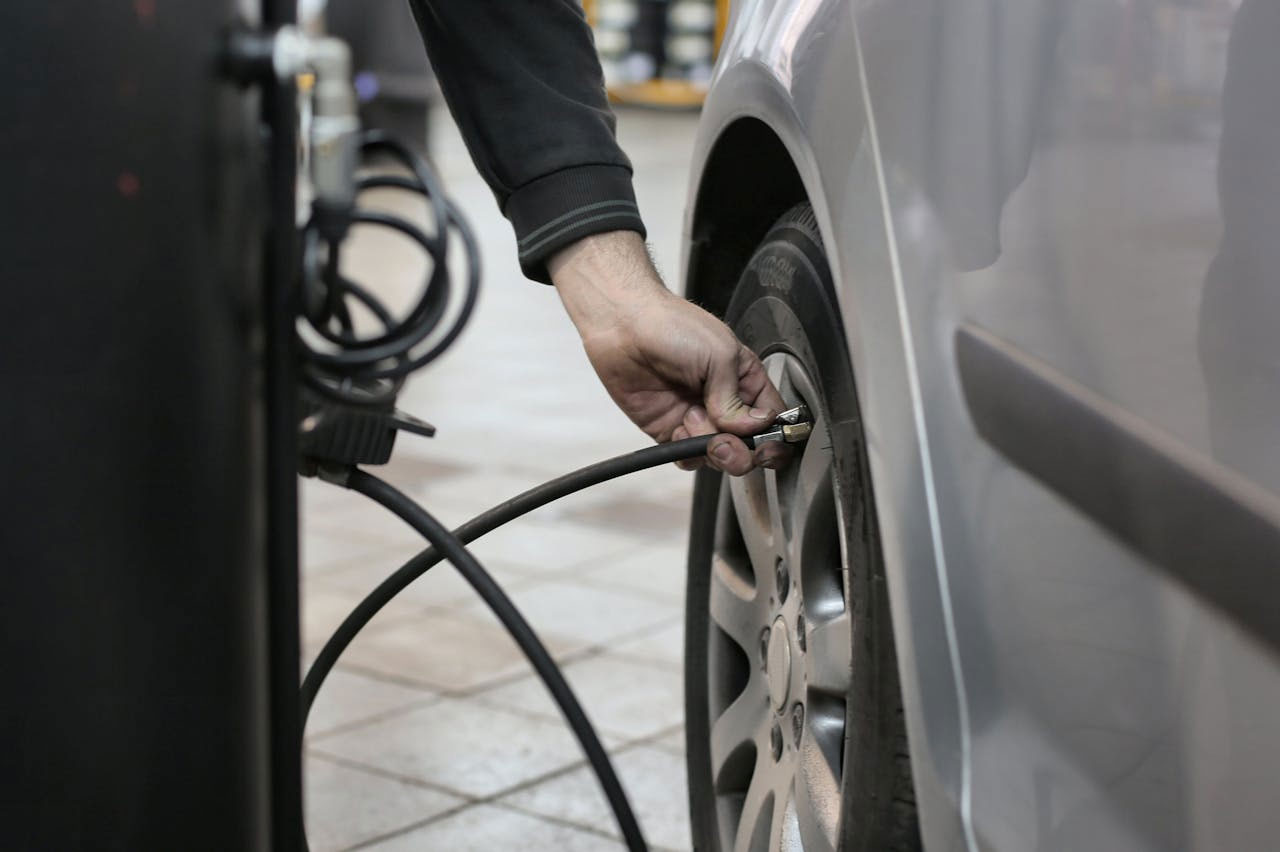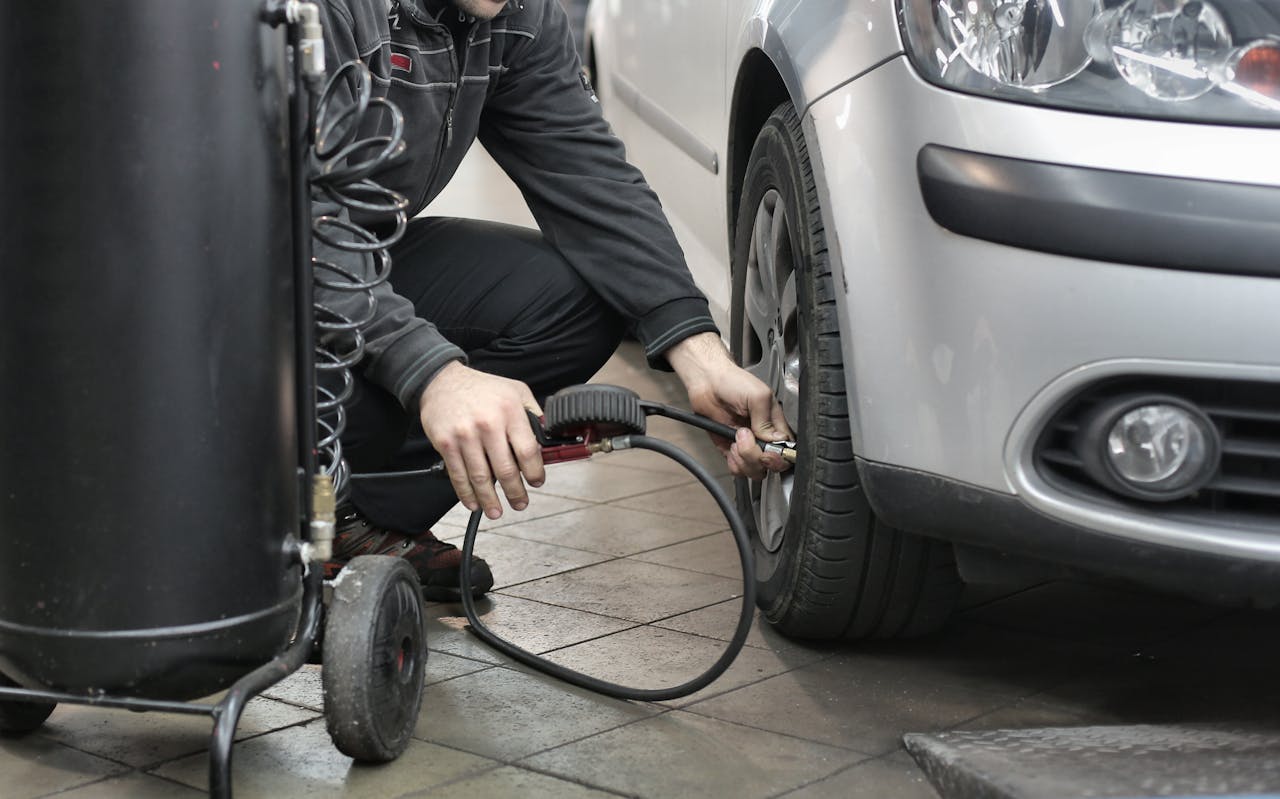The Benefits of Putting Nitrogen in Your Tyres

Maintaining optimal tyre pressure is essential for ensuring vehicle safety, performance, and fuel efficiency. Traditionally, drivers have used regular air to inflate their tyres, but an increasing number of professionals and everyday drivers are now turning to nitrogen inflation. This article explores the science behind nitrogen inflation, debunks common myths, and outlines the practical benefits of using nitrogen over regular air. Understanding these aspects will help you make an informed decision about whether nitrogen inflation is right for your tyres.
What is Nitrogen Inflation?
Nitrogen inflation involves the process of filling tyres with nitrogen gas rather than the conventional air mixture. Conventional air, which is commonly used to inflate tyres, is composed of approximately 78% nitrogen, 21% oxygen, and a small fraction (about 1%) of other gases, including argon and carbon dioxide. In contrast, nitrogen inflation uses nearly pure nitrogen gas, typically in the range of 95-99% purity. The higher concentration of nitrogen means that the proportion of oxygen and other gases in the tyre is significantly reduced. This reduction has several beneficial effects on the tyre’s performance and longevity.
The process of nitrogen inflation usually involves the following steps:
Purging the Tyre: Initially, the tyre is purged of the existing air. This is done by filling and deflating the tyre with nitrogen several times to remove as much of the oxygen and moisture-laden air as possible.
Filling with Nitrogen: Once purged, the tyre is filled with nitrogen gas to the recommended pressure level. Specialised equipment ensures that the nitrogen used is of the required purity.
Checking for Leaks: After inflation, the tyre is checked for any leaks to ensure that the nitrogen pressure remains stable.
Why Choose Nitrogen Over Regular Air?
Improved Tyre Pressure Retention: One of the most significant advantages of nitrogen inflation is its ability to retain tyre pressure for a longer period compared to regular air. Nitrogen molecules are larger than oxygen molecules, which reduces the rate of diffusion through the tyre’s rubber. This slower rate of pressure loss means that nitrogen-inflated tyres maintain optimal pressure levels for extended periods, leading to better fuel efficiency and enhanced driving safety.
Reduced Oxidation: Oxygen in regular air can react with the rubber in the tyre, leading to oxidation. This oxidation process degrades the tyre’s inner lining and can also affect the metal components of the wheel, such as the rim. By minimising the presence of oxygen, nitrogen inflation significantly reduces the oxidation process, thereby prolonging the life of the tyre and maintaining the integrity of the wheel components.
Enhanced Temperature Stability: Tyres experience fluctuations in temperature due to changes in driving conditions, such as high speeds, heavy loads, or varying ambient temperatures. Nitrogen-inflated tyres exhibit more stable pressure changes under these varying conditions because nitrogen gas is less reactive to temperature changes compared to oxygen. This stability is particularly beneficial in extreme driving conditions, ensuring consistent tyre performance and reducing the risk of blowouts or other tyre failures.
Improved Safety: Maintaining correct tyre pressure is crucial for safe driving. Under-inflated tyres can lead to poor handling, increased braking distances, and a higher likelihood of blowouts. By ensuring that tyres remain at their recommended pressure for longer periods, nitrogen inflation enhances overall vehicle safety.
Environmental Impact: Properly inflated tyres reduce rolling resistance, which improves fuel efficiency and reduces carbon emissions. Additionally, nitrogen inflation’s ability to extend tyre life means fewer tyres are discarded, contributing to reduced environmental waste.
Common Myths about Nitrogen Inflation
Myth 1: Nitrogen Inflation is Just a Marketing Gimmick
Reality: While some may perceive nitrogen inflation as a mere marketing strategy, its advantages are firmly grounded in science and practical applications. Professional racing teams and the aviation industry have long recognised the benefits of nitrogen for its superior performance characteristics. The scientific principles supporting nitrogen inflation include:
Molecular Size: Nitrogen molecules are larger than oxygen molecules, which reduces the rate of tyre pressure loss.
Inert Nature: Nitrogen is less reactive than oxygen, minimising the risk of oxidation and corrosion within the tyre and wheel components.
Moisture Reduction: Nitrogen is typically dry, which means there is less moisture inside the tyre, preventing variations in pressure due to temperature changes.
These benefits translate into real-world advantages for everyday drivers, as well as for those in high-performance and commercial settings.
Myth 2: Nitrogen Inflation is Unnecessary for Everyday Driving
Reality: Although nitrogen inflation offers pronounced benefits in high-performance and commercial settings, everyday drivers can also reap significant rewards. For instance:
Improved Fuel Efficiency: Consistent tyre pressure reduces rolling resistance, leading to better fuel economy.
Enhanced Safety: Properly inflated tyres offer better handling, reduced risk of blowouts, and shorter braking distances.
Extended Tyre Life:Reduced oxidation and pressure stability mean tyres last longer, saving money in the long run.
These benefits contribute to a safer and more cost-effective driving experience, making nitrogen inflation a worthwhile consideration for all drivers.
Myth 3: Nitrogen Inflation is Too Expensive
Reality: While nitrogen inflation may come with a higher initial cost compared to regular air, the long-term financial benefits can justify the expense. Key considerations include:
Extended Tyre Lifespan: Longer-lasting tyres mean fewer replacements, reducing long-term costs.
Fuel Savings: Improved fuel efficiency leads to savings at the pump, which can offset the initial investment in nitrogen inflation.
Reduced Maintenance Costs: With tyres maintaining proper pressure for longer periods, the need for frequent pressure checks and top-ups decreases, saving both time and money.
When considering these factors, the initial expense of nitrogen inflation is often outweighed by the cumulative savings over time.
Getting Started with Nitrogen Inflation
Service Availability
Many automotive service centres and tyre shops now offer nitrogen inflation services. When selecting a provider, consider the following:
Reputation: Choose a reputable service provider known for quality and reliability.
Equipment: Ensure the provider uses proper equipment to achieve the desired nitrogen purity levels.
Experience: Opt for a provider with experience in nitrogen inflation to guarantee proper handling and inflation techniques.
Transitioning from Regular Air
Switching from regular air to nitrogen inflation is a straightforward process:
Purging the Tyre: The tyre is first purged of the existing air to remove as much oxygen and moisture as possible. This is typically done by filling and deflating the tyre with nitrogen several times.
Filling with Nitrogen: Once purged, the tyre is filled with nitrogen to the recommended pressure level. Specialised equipment ensures the correct purity of nitrogen.
Top-Ups: Regular top-ups with nitrogen are recommended to maintain the benefits, especially if any air has been introduced during maintenance.
Maintenance
Even with nitrogen inflation, regular tyre pressure checks remain essential. While nitrogen slows down pressure loss, it does not eliminate it entirely. To ensure optimal tyre performance and longevity, consider the following maintenance tips:
Regular Checks: Check tyre pressure at least once a month and before long trips.
Top-Ups: If pressure is low, top up with nitrogen to maintain the correct pressure.
Inspections: Regularly inspect tyres for signs of wear, damage, or uneven tread patterns.
Conclusion
In conclusion, nitrogen inflation offers significant benefits, including improved tyre pressure retention, reduced oxidation, enhanced temperature stability, and increased safety. These advantages make nitrogen a superior choice for tyre inflation, whether you are a professional driver or simply seeking to enhance your everyday driving experience. For drivers in Perth looking to maximise these benefits, Associated Tyre and Wheel stands out as the best tyre supplier in the region. With their expertise in nitrogen inflation and a commitment to providing top-quality tyre services, Associated Tyre and Wheel ensures that your vehicle performs at its best, offering safety, efficiency, and longevity. Visit Associated Tyre and Wheel for all your tyre needs and experience the difference that nitrogen inflation can make.

Call Today | 08 92449699 | WA’s Tyre, Wheel, Rim & Lift Kit Superstore


 Purchasing and paying for wheels and tyres at Associated Tyre And Wheel has never been easier. Payment can be made by one of the following options below:
Purchasing and paying for wheels and tyres at Associated Tyre And Wheel has never been easier. Payment can be made by one of the following options below:

